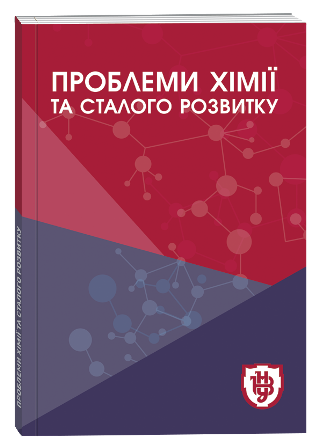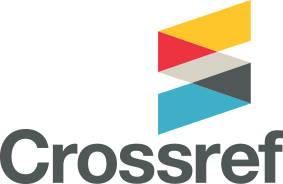PHOTODESTRUCTION OF FOOD DYES FROM AQUEOUS SOLUTIONS UNDER THE INFLUENCE OF UV RADIATION
DOI:
https://doi.org/10.32782/pcsd-2025-3-1Keywords:
food dyes, photodegradation, degree of photodegradation, photocolorimetry, food chemistryAbstract
In accordance with the EU Directive "Directive (EU) 2020/2184 of the European Parliament and of the Council of 16 December 2020 on the quality of water intended for human consumption", drinking water is recognized as one of the important food products, for which standards for the content of various pollutants, including dyes, have been adopted. It should also be noted that one of the key goals for 2030 of the EU countries is to guarantee accessibility and long-term provision of water supply and sanitation for all (the sixth Sustainable Development Goal (SDG)).Modern industry produces more than 107 tons of various synthetic dyes, 15–20% of which end up in wastewater.Therefore, the problem of cleaning water bodies from dyes remains relevant.The paper presents a comparative analysis of the photodegradation of food dyes included in the red, green and yellow candies of the brands «Mintex+», «Bim Bom», «Duchess», «Citrus Mix» and «Juice Mix».It is shown that the degree of resistance of red dyes to ultraviolet radiation varies depending on the sample. The highest resistance was demonstrated by the dye used in «Citrus Mix» candies, while the lowest was demonstrated in the «Juice Mix» sample. It was determined that red dyes are generally characterized by relatively high resistance to photodegradation.A similar trend is observed for green dyes, although their resistance to UV radiation was lower. The dye used in the product «Duchess» was the most stable, and the least stable was in the «Bim Bom» candies. It was determined that green dyes are more vulnerable to photodegradation processes compared to red ones.The variability of the resistance of yellow dyes to UV radiation was determined. It was found that the dye from the «Bim Bom» lollipops demonstrated the highest resistance, the «Juice Mix» sample the lowest. According to the results obtained, the dyes can be placed in the following sequence in terms of the degree of resistance to photodegradation: red < yellow < green. The results obtained can be explained by the chemical nature of synthetic dyes and their ability to photodegradation processes.
References
Vishnu G., at. al. Photodegradation of methylene blue dye using light driven photocatalyst-green cobalt doped cadmium ferrite nanoparticles as antibacterial agents. Journal of Cleaner Production. 2023. Vol. 404. 136977. DOI: https://doi.org/10.1016/j.jclepro.2023.136977.
Мельник С. Р., Мельник Ю. Р., Дзіняк Б. О., Піх З. Г. Контроль якості та безпечності харчових продуктів. Навч. посіб. Львів : Видавництво «Левада». 2018. 224 с.
Савчук Т. І., Кормош Ж. О., Корольчук С. І. Визначення харчових барвників у газованих напоях. Товарознавчий вісник. Вип. 14. 2021. С. 78–87.
Haki M. A., Imgharn A., Aarab N., et al. Efficient removal of crystal violet dye from aqueous solutions using sodium hydroxide-modified avocado shells: kinetics and isotherms modeling. Water Sci Technol. 2022. Vol. 85(1). Р. 433–448. DOI: https://doi.org/10.2166/wst.2021.451
Sadoq M., Atlas H., Imame S., et al. Elimination of crystal violet from aqueous solution by adsorption on naturel polysaccharide: Kinetic, isotherm, thermodynamic studies and mechanism analysis. Arabian Journal of Chemistry. 2024. Vol. 17, Is. 1. 105453. DOI: https://doi.org/10.1016/j.arabjc.2023.105453
Ramirez L. S., Dragotakes Q., Casadevall A. A food color-based colorimetric assay for Cryptococcus neoformans laccase activity. Microbiology Spectrum. 2024. Vol. 12, Is. 8. DOI: https://doi.org/10.1128/spectrum.00442-24.
Boyles C., Schmidtke Sobeck S. J. Photostability of organic red food dyes. Food Chemistry. 2020. Vol. 315. 126249. DOI: https://doi.org/10.1016/j.foodchem.2020.126249.
Vidana Gamage G. C., Goh J. K., Choo W. S. Natural blue colourant preparations from blue pea flower and spirulina: A comparison stability study. Food Chemistry Advances. 2023. Vol. 3. DOI: https://doi.org/10.1016/j.focha.2023.100457.
Bopape D. A., Ntsendwana B., Mabasa F. D. Photocatalysis as a pre-discharge treatment to improve the effect of textile dyes on human health: A critical review. Heliyon. 2024. Vol. 10, Is. 20. e39316. DOI: https://doi.org/10.1016/j.heliyon.2024.e39316.
Pysarenko S., Kaminskyi O., Chyhyrynets O., Denysiuk R., Chernenko V. Photocatalytic destruction and adsorptive processes of methylene blue by potassium titanate. Materials Today: Proceedings. 2022. Vol. 62(15). P. 7754-7758. DOI: https://doi.org/10.1016/j.matpr.2022.05.476.








